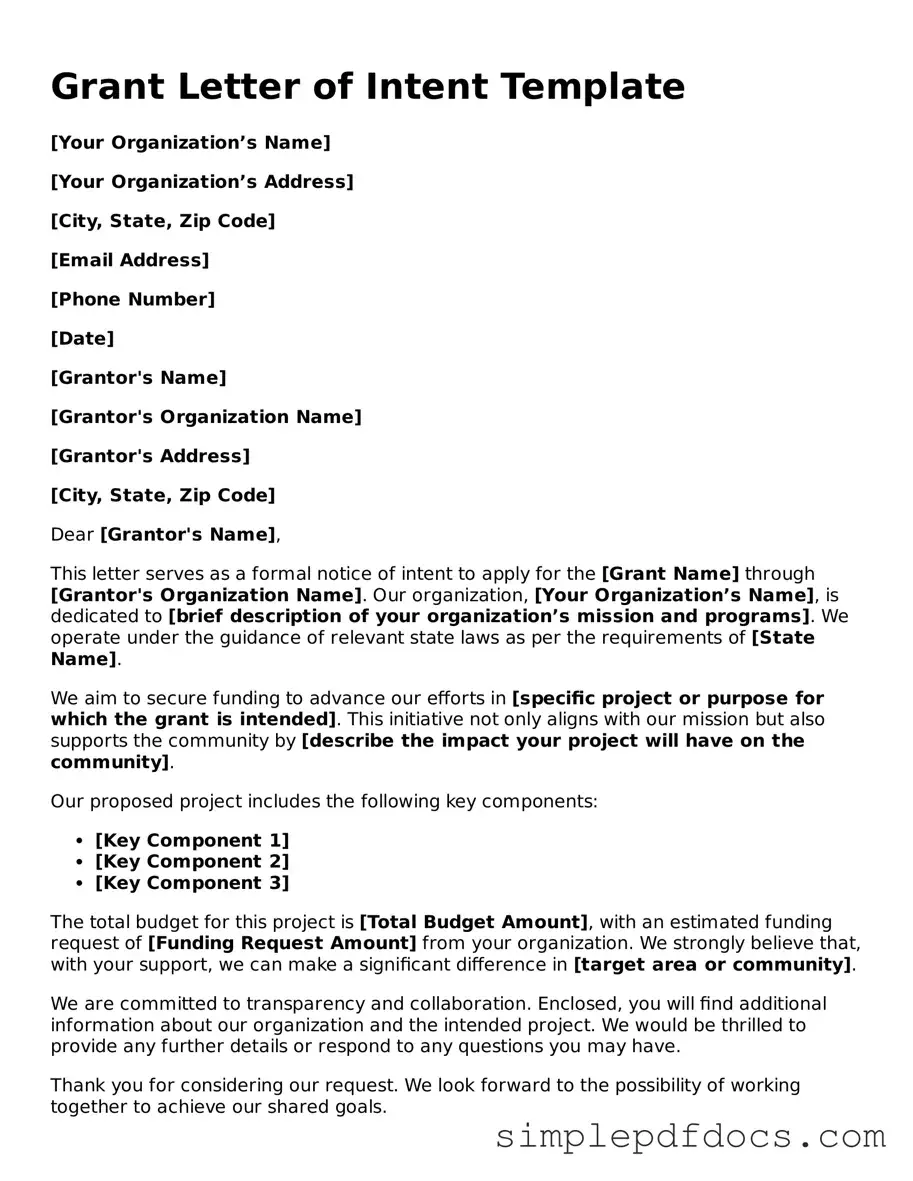Attorney-Approved Grant Letter of Intent Form
The Grant Letter of Intent form is a preliminary document that outlines an organization’s intent to apply for funding from a grant-making entity. This form serves as a way to communicate essential information about the proposed project and the requesting organization. Understanding its components and purpose can enhance the chances of successfully securing funding.
Get Document Here
